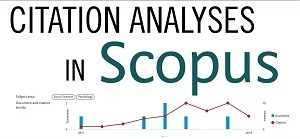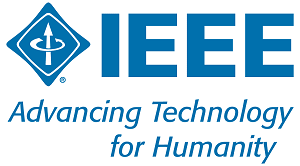Effectiveness of Modified Scapular Exercise and Stretching Exercise on Pressure Pain and Neck Disability in Architecture Students with Mechanical Neck Pain in Denpasar
Keywords:
Mechanical neck pain, Pressure pain, Neck disability, Modified scapular exercise, Stretching exerciseAbstract
This study aimed to prove the difference in the effectiveness of modified scapular exercise compared to stretching exercise in pressure pain and neck disability in architecture students with mechanical neck pain in Denpasar. This research is experimental research with pre and post-test two-group design. The research sample consisted of 16 people who were divided into two groups by simple random sampling. Group 1 with the modified scapular exercise intervention and group 2 with the stretching exercise intervention. Both groups received treatment 3 times a week for 6 weeks. Measurements were made before and after treatment. Pressure pain was measured with a pressure algometer and neck disability were measured with the Indonesian version of the neck disability index questionnaire. Based on the paired sample t-test on modified scapular exercise and stretching exercise, the results obtained were right and left pressure pain with a value of p<0.001 and neck disability with p<0.001, which means that there was a significant difference in the decrease of pressure pain and neck disability before and after the intervention, in each group. For the independent sample t-test, the value of right pressure pain was p<0.05, left pressure pain was p<0.05, and neck disability was p<0.001, which showed significant differences in the decrease of pressure pain and neck disability in the two groups. In conclusion, modified scapular and stretching exercises can decrease pressure pain and neck disability in architecture students with mechanical neck pain in Denpasar. However, based on the analysis of the results of the intervention, modified scapular exercise was more effective in decreasing pressure pain and neck disability in architecture students with mechanical neck pain compared to stretching exercise.
Downloads
References
Nugraha, M. H. S., Juniantari, N. K. A. & Saraswati, N. L. P. G. K. 2019. Efektivitas penerapan edukasi sikap kerja, elektroterapi dan terapi latihan untuk penderita mechanical neck pain. Jurnal Ergonomi Indonesia, 05(02), pp. 83-89.
Kurniasari, N. D., Istiqomah, S. H. & Hendrarini, L. 2015. Hubungan durasi, frekuensi dan posisi penggunaan serta ukuran laptop dengan keluhan muskuloskeletal pada mahasiswa jurusan pendidikan teknik informatika di Universitas Negeri Yogyakarta. Jurnal Kesehatan Lingkungan, 6(4), pp. 165- 175.
Situmorang, B., W. & I., W. 2020. Hubungan antara durasi dan postur tubuh penggunaan komputer terhadap keluhan neck pain pada tenaga kependidikan fakultas kesehatan masyarakat universitas diponegoro. J Kesehat Masy, 8(5), pp. 672-678.
Welling. 2014. Neck pain a survey of injury claims data after introduction of injury care. Occupational and Environmental Medicine, 52(4), pp. 450-455.
Dzuria, R. A. 2021. Prevalensi dan faktor resiko neck pain pada mahasiswa fakultas ilmu kesehatan Universitas Muhammadiyah Surakarta pada masa pandemi covid-19. Naskah Publikasi.
Lee, M. et al. 2015. The effects of smartphone use on upper extremity muscle activity and pain threshold. J. Phys. Ther. Sci., 27(6), pp. 1743-1745.
Fatmawati, V. 2013. Penurunan nyeri dan disabilitas dengan integrated neuromuscular inhibition techniques (Init) dan massage effleurage pada myofascial trigger point syndrome otot trapesius bagian atas. Sport and Fitness Journal, 1(1), pp. 60-71.
Wicaksono, R. E., Suroto & Widjasena, B. 2016. Hubungan postur, durasi dan frekuensi kerja dengan keluhan muskuloskeletal akibat penggunaan laptop pada mahasiswa fakultas teknik jurusan arsitektur universitas diponegoro. Jurnal Kesehatan Masyarakat, 4(3).
Chuachan, S., Kaewmunee, W., Thongnun, K., Prom-in, J., Saelao, T., Assawawongsawat, N. 2021. The effects of modified scapular exercises in participants with neck, scapular and shoulder pain: A randomized trial. Thai Journal of Physical Therapy, 42(1), pp. 31-44.
Paul, J. & S., T. 2019. Comparative study between static stretching and dynamic stretching on mechanical neck pain. International Journal of Medical and Exercise Science, 5(1), pp. 552-558.
Mardiyana, U. H., Endaryanto, A. H., Priasmoro, D. P. & Abdullah, A. 2022. Pengaruh pemberian stretching exercise terhadap tingkat nyeri pada penderita neck pain di RSUD jombang. Jurnal Keperawatan Muhammadiyah, 7(1), pp. 61-68.
Tunwattanapong, P., Kongkasuwan, R. & Kuptniratsaikul, V., 2015. The effectiveness of a neck and shoulder stretching exercise programamong office workers with neck pain: a randomized controlled trial. Clinical rehabilitation, Thailand.
Seo, Y. G. et al., 2020. Is scapular stabilization exercise effective for managing nonspecific chronic neck pain?: a systematic review. Asian Spine Journal, 14(1), pp. 122-129.
Suri, P. R. & Hameed, U. 2018. Comparison of effects of neck stretching and neck stabilisation exercises on pain and disability in non specific chronic neck pain. IJPOT, 12(2).
Gendy, M. H. E., Mawad, A. N. W. & Mostafa, Y. S. 2021. Scapular stabilization exercise versus neck stabilization exercise in females with chronic mechanical neck pain. Med. J. Cairo Univ., 89(7), pp. 2729-2734.
Mey, D., Danneels, B, C. & AM, C., 2012. Scapular muscle rehabilitation exercises in overhead athletes with impingement symptoms: effect of a 6-week training program on muscle recruitment and functional outcome. Am J Sports Med, 40(8), pp. 1906-1915.
Wahyuningtyas, S., Isro’in, L. & Maghfirah, S. 2019. Hubungan antara perilaku penggunaan laptop dengan keluhan musculoskeletal disorder (MSDs) pada mahasiswa teknik informatika. Prosiding 1st Seminar Nasional Arah Kebijakan dan Optimalisasi Tenaga Kesehatan Menghadapi Revolusi Industri 4.0, pp. 196-206.
Pertiwi, J. K. 2017. Penerapan kombinasi mckenzie exercise dan ultrasound lebih baik daripada myofascial dan ultrasound release untuk memperbaiki 76 disabilitas pada kasus mechanical neck pain (tesis). Denpasar: Universitas Udayana.
El-Sayed, H. S., Elnaggar, I. M. & Abdelsalam, M. S., 2022. Cervical stabilization exercises versus scapular stabilization exercises in treatment of chronic mechanical neck pain. Med. J. Cairo Univ, 90(6), pp. 1729-1735.
Kisner, C. & Colby, L. 2012. Therapeutic exercise foundation and technique. 6th ed. USA: F.A. Davis Company.
Trisnowiyanto, B. 2017. Teknik penguluran otot–otot leher untuk meningkatkan fungsional leher pada penderita nyeri tengkuk non-spesifik. Artikel Kesehatan Terpadu, 1(1), pp. 6-11.
Deen, N., Akhter, S. & Abbas, S. 2020. The effectiveness of isometric strengthening with static stretching vs. static stretching in nonspecific chronic neck pain. International Journal of Physical Medicine & Rehabilitation, 8(4), pp. 1-4.
Anand, B. & Goyal, V. 2020. Effectiveness of neck and shoulder stretching program among professionals working from home during covid–19. Physiotherapy and Occupational Therapy Journal, 13(2), pp. 61-65.
Yildiz, T. I., Turgut, E. & Duzgun, I. 2018. Neck and scapula-focused exercise training on patients with nonspecific neck pain: a randomized controlled trial. Journal of Sport Rehabilitation, 27(5), pp. 403-412.
Haryatno, P. & Kuntono, H. P. 2016. Pengaruh pemberian tens dan myofascial release terhadap penurunan nyeri leher mekanik. Jurnal Terpadu Ilmu Kesehatan, 5(2), pp. 182-188.
Mc.Kenzie & Kubey. 2000. 7 steps to a pain-free life, how to rapidly relieve back and neck pain using the mcKenzie method. England: Dutton Book.
Koltyn, K. F., Brellenthin, A. G., Cook, D. B., Sehgal, N. Hillard, C. 2014. Mechanisms of exercise induced hypoalgesia. The Journal of Pain, Volume 15, pp. 1294-1304.
Thorén, P., Floras, J. S., Hoffmann, P. & Seals, D. R., 1990. Endorphins and exercise physiological mechanism and clinical implication. Journal of Medicine and Science in Sports and Exercise, Volume 22, pp. 417-428.
Walton, D. M., Levesque, L., Payne, M. & Shick, J. 2014. Clinical pressure pain threshold testing in neck pain: comparing protocols, responsiveness, and association with psychological variables. Journal of American Physical Therapy Association, 94(6), pp. 827-837.
Young, B. A., Walker, M. J., Strunce, J. B., Boyles, R. E., Whitman, J. M., Childs, J. D. 2009. Responsiveness of the neck disability index in patients with mechanical neck disorders. Spine J, 9(10), pp. 802-808.
Andersen, C. H., Andersen, L. L., Zebiz, M. K. & Sjogaard, G. 2014. Effect of scapular function training on chronic pain in the neck/shoulder region: a randomized controlled trial. J Occup Rehabil, Volume 24, pp. 316-324.
Zebis, M. K., Andersen, C. H., Sundstrup, E., Pedersen, M. T., Sjøgaard, G., Andersen, L.L. 2014. Time-wise change in neck pain in response to rehabilitation with specific resistance training:implications for exercise prescription. PLOS ONE, 9(4).
Published
How to Cite
Issue
Section
Copyright (c) 2023 Aryaning Dwi Antyesti, Nila Wahyuni, Wahyuddin, Dewa Putu Gede Purwa Samatra, Luh Putu Ratna Sundari, Ni Wayan Tianing

This work is licensed under a Creative Commons Attribution 4.0 International License.





























